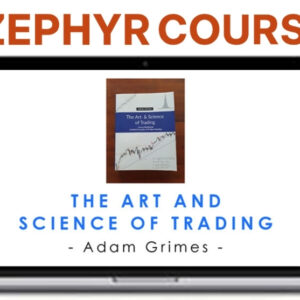Description
Key Takeaways From the Workshop
Although the workshop covered a wide range of topics, the key takeaways centered on practical strategies you can use to implement butterfly and condor options strategies effectively.
You learned that mastering trading psychology is essential—staying disciplined prevents emotional decisions that can derail your trades. By remaining objective, you’ll avoid the common pitfalls of chasing losses or letting short-term market movements dictate your actions.
Risk management also stood out as a core principle. You need to set defined risk parameters before entering trades and always adhere to them. This approach helps protect your capital and guarantees you’re not exposed to unnecessary losses.
Ultimately, combining sound trading psychology with strict risk management gives you a solid foundation for success with butterfly and condor strategies.
Practical Strategies for Butterfly and Condor Trades
Building on the importance of trading psychology and risk management, you can now focus on the practical steps for executing butterfly and condor trades.
Start by selecting underlying assets with predictable volatility for butterfly strategies; this helps you maximize profitability from limited price movement. Evaluate strike prices and expiration dates to balance risk and reward, making certain your wings are placed at ideal distances.
For condor setups, choose instruments with stable price trends and low implied volatility. Adjust your strikes to create a wide profit zone, minimizing the risk of early assignment.
Always monitor greeks—especially delta and theta—to guarantee your position aligns with your market outlook.
Real-Time Market Applications and Case Studies
When you shift from theory to real trades, seeing butterfly and condor strategies in live market conditions brings their strengths and limitations into sharp focus.
In actual trading, you quickly notice how market volatility can impact your profit zones or expose you to unexpected risks. For example, if the market suddenly becomes volatile, a well-placed iron condor might require fast adjustments or risk management tactics to avoid losses.
You’ll often need to roll positions, hedge, or close trades early to control risk. Case studies show that traders who actively monitor conditions and adapt their butterfly and condor trades can limit losses and sometimes capture profits even when the market moves unpredictably.
Using these strategies in real time teaches you discipline and the importance of structured risk management.
Frequently Asked Questions
Who Are the Primary Instructors or Presenters for the Workshop?
When you look for primary instructors or presenters, focus on their instructor backgrounds and unique teaching methods. You’ll benefit from experienced professionals who use clear, practical approaches, ensuring you understand complex topics and apply them confidently in real trading scenarios.
What Are the Prerequisites to Attend This Workshop?
To attend this workshop, you’ll need a solid foundation in options knowledge and some trading experience. You don’t have to be an expert, but you should understand basic options concepts and have experience executing trades confidently.
Is the Workshop Suitable for Complete Beginners in Options Trading?
If you’re a complete beginner in options trading, you’ll want a workshop that covers beginner strategies and options fundamentals. Make sure you understand basic concepts first—otherwise, you might struggle to keep up with more advanced material.
How Do I Access the Workshop Materials After the Event?
After the event, you’ll receive workshop access through a dedicated portal or email instructions. To handle material retrieval, just log in with your credentials, and you’ll find all the workshop content available for you to review anytime.
Are There Any Continuing Education Credits Offered for Participation?
If you’re wondering about continuing education credits eligibility, you’ll want to check the event’s details or contact the organizers directly. Not all workshops offer continuing education, so it’s important to confirm credit eligibility before participating.













 Apollonia Ponti – She Needs Space Program
Apollonia Ponti – She Needs Space Program  Arcane 2.0 Course
Arcane 2.0 Course  Aeromir – Butterfly and Condor Workshop
Aeromir – Butterfly and Condor Workshop  Adam Grimes – Tradecraft: Your Path to Peak Performance Trading
Adam Grimes – Tradecraft: Your Path to Peak Performance Trading  Aaron Darko – Complete Alpha Shredding Bundle
Aaron Darko – Complete Alpha Shredding Bundle  7 Tantric Dates Online Course for Couples
7 Tantric Dates Online Course for Couples  Agora Financial – Jim Rickards Intelligence Triggers
Agora Financial – Jim Rickards Intelligence Triggers  ActiveDayTrader – Bond Trading Bootcamp & Swinging for the Fences
ActiveDayTrader – Bond Trading Bootcamp & Swinging for the Fences  Asian Efficiency – Productivity Blueprint
Asian Efficiency – Productivity Blueprint  ADZ Trading Academy – SniperADZ
ADZ Trading Academy – SniperADZ  AloMoves – Beyond Flexibility
AloMoves – Beyond Flexibility  Bob Serling – Ultimate Leverage Licensing Express
Bob Serling – Ultimate Leverage Licensing Express  Anthony Lee – The Ultimate AI Automation Bundle
Anthony Lee – The Ultimate AI Automation Bundle  Alan Weiss – Alan’s Super Language Practicum
Alan Weiss – Alan’s Super Language Practicum  Blog Growth Engine 4.0 by Adam Enfroy
Blog Growth Engine 4.0 by Adam Enfroy  Adam Grimes – The Art and Science of Trading
Adam Grimes – The Art and Science of Trading